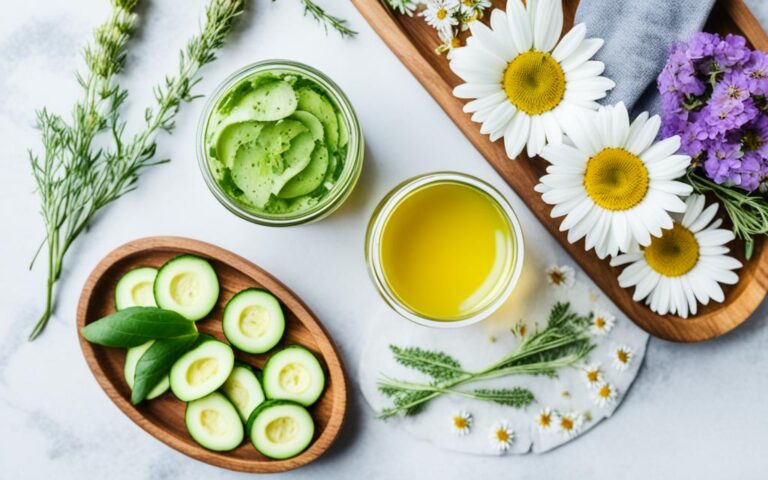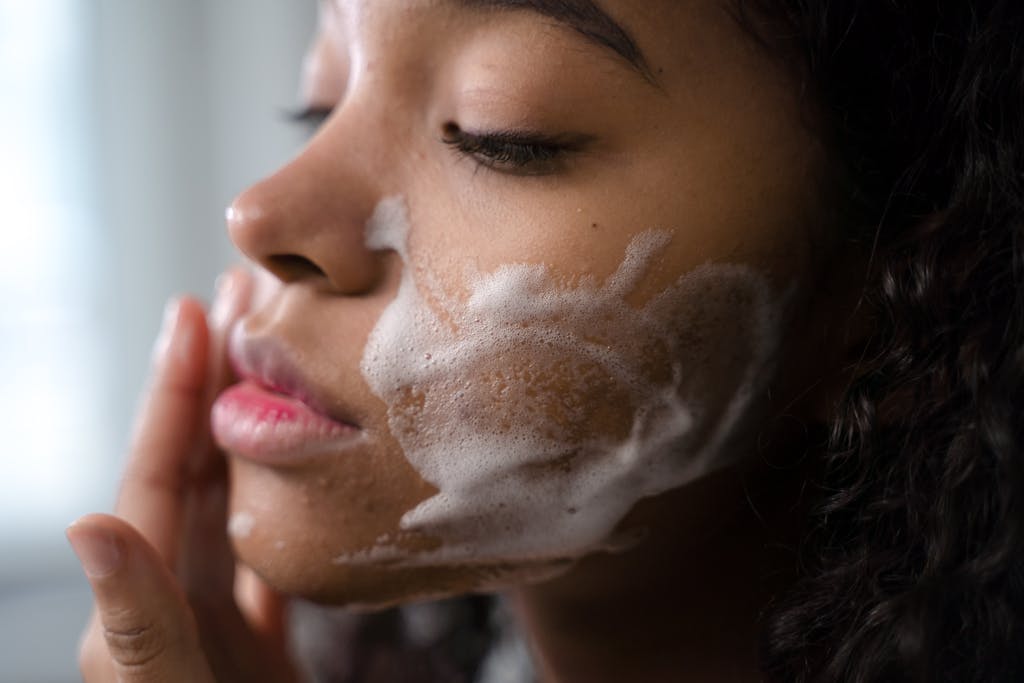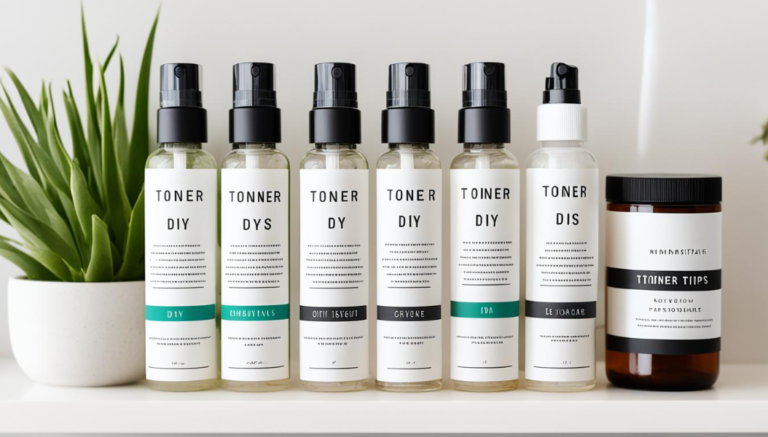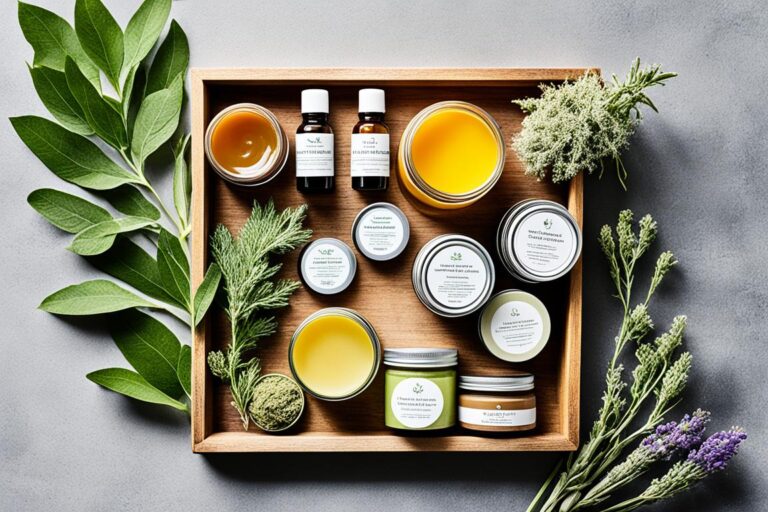Natural Teeth Whitening: 5 Top DIY Methods to Try at Home
Ever wondered how to get a dazzling smile without spending a fortune? Natural teeth whitening might be the solution you’re looking for! From coffee and tea to age and lifestyle habits, several factors can lead to stained teeth. But, who doesn’t love a good DIY project? In this post, you’ll discover five fantastic and easy methods to whiten your teeth at home using natural ingredients. Get ready to shine bright with these practical tips that won’t break the bank. Don’t forget to subscribe to stay updated on more awesome hacks and tips!
For more inspiration, check out this DIY Teeth Whitening at Home in 2 Minutes video on YouTube.
You know, I used to be a total skeptic when it came to natural teeth whitening. I mean, swishing oil around in my mouth? It sounded like something out of a weird health fad. But let me tell you, oil pulling has become my secret weapon for a brighter smile!

I started my mornings with a tablespoon of coconut oil, swishing it around while I got ready for the day. At first, it felt strange, but after a week, I actually started to enjoy it. It was like a mini mouth spa every morning!
And don’t get me started on baking soda. I mix a little with water to make a paste twice a week, and it’s like a mini brightness boost for my teeth. Sure, it doesn’t taste great, but the results are so worth it.
The best part? My dentist actually complimented me on my oral health at my last check-up. Me! The person who used to dread dental visits! Now, I’m not saying I’m a dental superhero or anything, but these simple, natural methods have made a world of difference. If I can do it, trust me, anyone can. It’s just about finding what works for you and sticking with it. Who knew my kitchen pantry would become my favorite dental care aisle?
Let’s explore these and other natural teeth whitening methods in more detail.
Understanding Natural Teeth Whitening
Many people dream of having a bright, white smile but hesitate to use chemical products. Natural teeth whitening is a fantastic alternative! It can be just as effective and often better for your overall oral health. Let’s dive into what natural teeth whitening is all about and understand how it works.
Why Consider Natural Teeth Whitening?
Why choose natural methods for whitening your teeth? It’s not just about achieving that Hollywood smile; it’s also about protecting your teeth from harsh chemicals that can damage enamel over time. Natural teeth whitening methods often involve ingredients you already have at home. Plus, they come with fewer risks and side effects compared to commercial products.
- Safety: Natural methods are less likely to cause sensitivity or gum irritation.
- Cost-Effective: Most natural whitening treatments use everyday items that are affordable and easy to find.
- Eco-Friendly: Using natural products reduces your carbon footprint and is gentler on the environment.
Curious to know which natural methods work best? Check out some effective natural teeth whitening methods that you can easily try at home.
How Natural Teeth Whitening Works
You might wonder how natural teeth whitening methods can achieve the same results as commercial products. It all comes down to the properties of the ingredients used.
Many natural teeth whitening techniques rely on mild abrasives, such as baking soda, which gently scrub away surface stains. Acidic fruits, like lemons and strawberries, help dissolve stains through a natural bleaching effect. Practices like oil pulling work by reducing bacteria and plaque, making your teeth appear whiter over time.
Popular Methods of Natural Teeth Whitening
Several popular methods have proven successful for natural teeth whitening. Here are a few to consider:
- Oil Pulling: This ancient practice involves swishing oil (like coconut oil) in your mouth to reduce bacteria and plaque.
- Baking Soda: Brushing with baking soda can gently scrub away stains without damaging your enamel.
- Hydrogen Peroxide: A mild antiseptic that can lighten stains and is often found in commercial teeth whitening products.
- Apple Cider Vinegar: Known for its antibacterial properties, it can also help remove stains from your teeth.
- Fruits and Vegetables: Crunchy fruits and veggies like apples and carrots can naturally clean your teeth while you chew.
Each method comes with its own set of benefits. To dive deeper into these, you can read more about these top seven ways to naturally whiten teeth.
Benefits of Natural Teeth Whitening
Choosing natural methods to whiten your teeth can bring a multitude of benefits beyond just a prettier smile.
- Improved Oral Health: Natural methods often promote better oral hygiene.
- Boosted Confidence: A whiter smile can significantly enhance your self-esteem.
- Healthier Lifestyle: Opting for natural ingredients often aligns with an overall healthier lifestyle.
For more insights, you can explore the dazzling benefits of teeth whitening and understand why it’s worth considering.
Remember, while natural teeth whitening methods can work wonders, consistency is key. For the best results, incorporate these practices into your daily routine. Stay tuned for more DIY methods to try at home in the next section of our post. And don’t forget to subscribe for more dental care tips!
DIY Methods for Natural Teeth Whitening
Looking to brighten that smile naturally at home? Let’s explore some DIY methods to achieve the perfect pearly whites without breaking the bank or risking your dental health.
1. Baking Soda and Hydrogen Peroxide
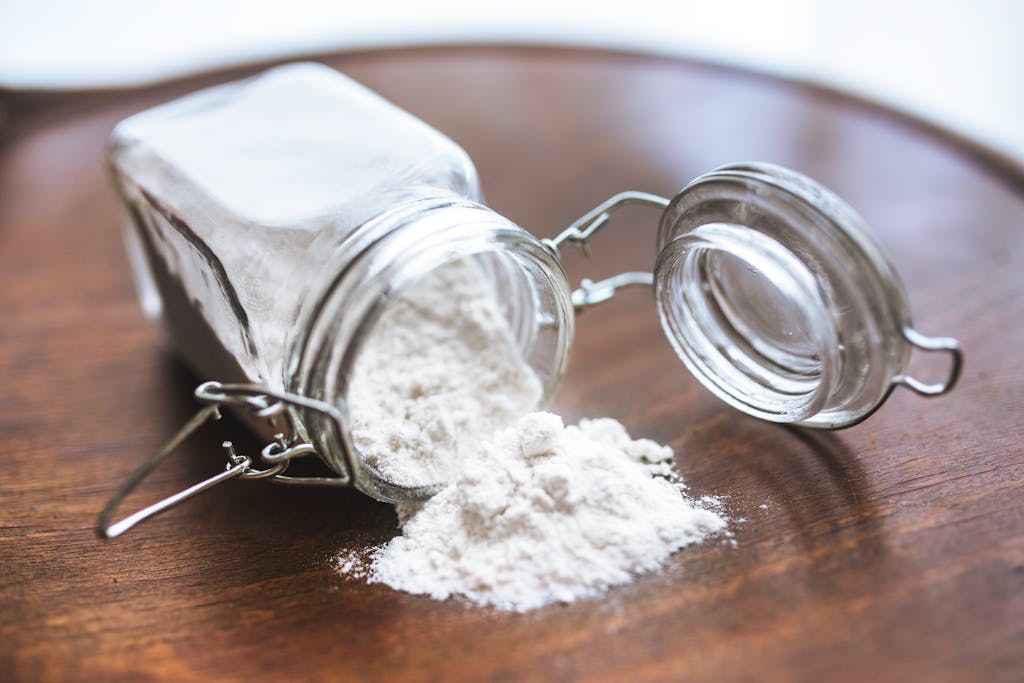
Combining baking soda and hydrogen peroxide is one of the most popular natural teeth whitening methods. The process is simple:
- Mix 1 tablespoon of baking soda with 2 tablespoons of hydrogen peroxide.
- Stir until you form a paste.
- Use this paste to brush your teeth for 2 minutes.
Use this method no more than twice a week to avoid enamel erosion. You should notice results within a few weeks.
Baking soda, a mild abrasive, helps scrub away surface stains, while hydrogen peroxide is a bleaching agent that helps lighten the color of your teeth. This combination can effectively remove dental plaque and reduce gingivitis. Learn more about this combination.
2. Oil Pulling
Oil pulling is an ancient Ayurvedic practice that involves swishing oil in your mouth to draw out toxins and improve overall oral health. Coconut oil is commonly used for this purpose. Here’s how you do it:
- Take 1 tablespoon of coconut oil.
- Swish it around in your mouth for 15-20 minutes.
- Spit it out in the trash (not the sink as it can clog pipes).
- Rinse your mouth with warm water and brush your teeth.
Aim to do this daily for best results.
This method helps reduce harmful bacteria in the mouth, which can lead to stained teeth and other oral health problems. It’s a gentle, natural way to maintain a brighter smile. Read more about oil pulling.
3. Apple Cider Vinegar
Apple cider vinegar (ACV) is known for its natural whitening properties, but it needs to be used with caution due to its high acidity. Follow these steps:
- Dilute 1 part ACV with 2 parts water.
- Swish the solution in your mouth for about 1 minute.
- Spit it out and rinse your mouth thoroughly with water.
- Brush your teeth afterward.
ACV can help remove surface stains from teeth, but its acidic nature can erode enamel if used too frequently. Limit its use to once or twice a week. Discover more about ACV here.
4. Activated Charcoal
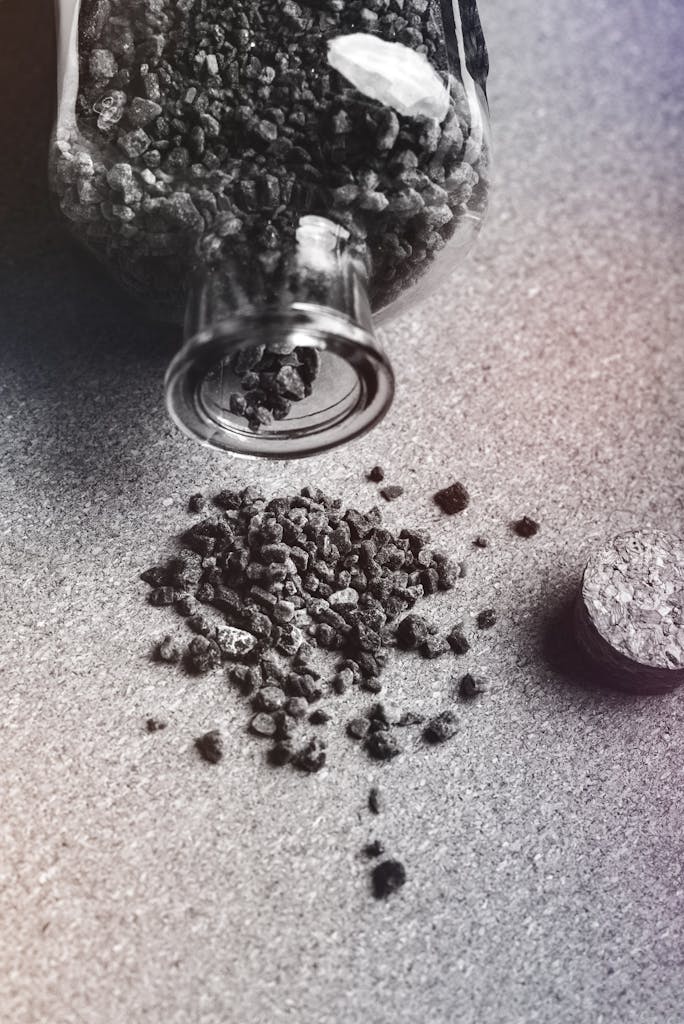
Activated charcoal is a trendy natural teeth-whitening method. It works by absorbing surface stains and toxins from the teeth. Here’s how to use it:
- Wet your toothbrush and dip it into the activated charcoal powder.
- Brush your teeth gently for about 2 minutes.
- Rinse your mouth thoroughly to remove all the charcoal residue.
Be cautious, as activated charcoal is abrasive and could wear down your enamel if used excessively. Once a week is sufficient to avoid damage. Find out more about its effectiveness.
5. Strawberries and Baking Soda
This might sound like a tasty treat, but it’s also an effective natural teeth whitening method. Strawberries contain malic acid, which helps remove surface stains. Here’s how you can use them:
- Mash 1-2 ripe strawberries.
- Mix the mashed strawberries with 1/2 teaspoon of baking soda.
- Use this mixture to brush your teeth for 2-3 minutes.
- Rinse your mouth well and brush with regular toothpaste.
This method should be used sparingly (once a week) as the acidic nature of strawberries can potentially weaken enamel if overused.
While there are debates on its effectiveness, this method is a flavorful, fun way to brighten your smile naturally! Learn more about this method.
These DIY methods for natural teeth whitening are not only simple but also use ingredients that you might already have at home. Always ensure to use these methods in moderation and maintain regular dentist visits for the best oral health.
Interested in more tips? Subscribe to our blog for the latest updates!
Comparison of DIY Methods for Natural Teeth Whitening
When it comes to brightening up that smile, many folks prefer natural teeth whitening methods. But which one works best? Let’s break down some popular DIY approaches and see how they stack up.
Baking Soda
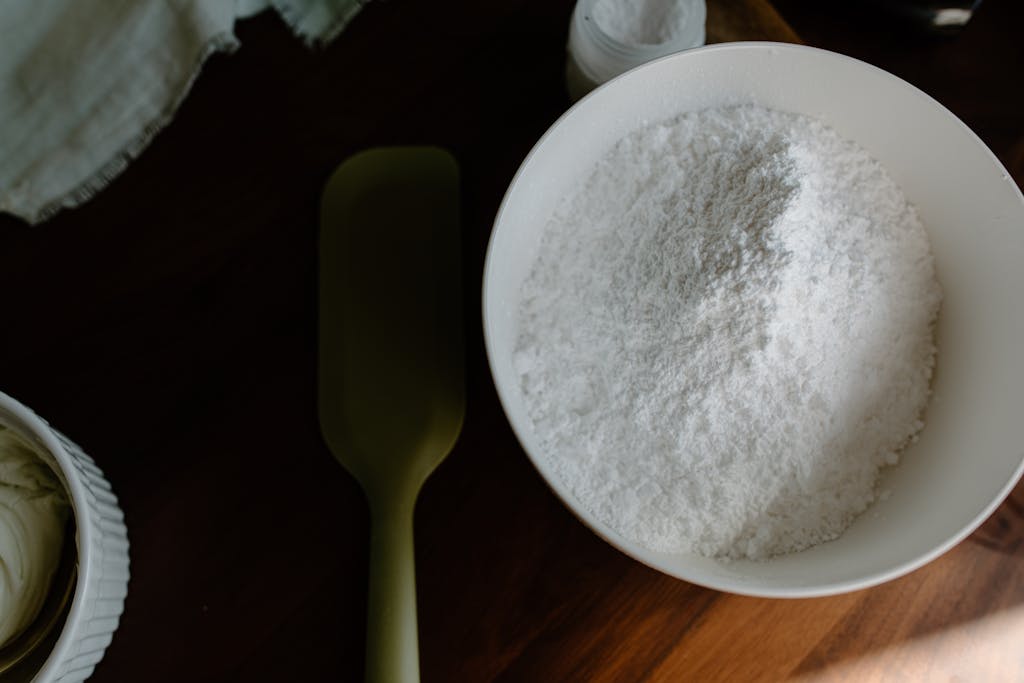
Baking soda is a household staple known for its whitening power. It’s mildly abrasive, helping to scrub away surface stains on teeth. Many toothpaste brands even incorporate baking soda for this reason. (eg. Arm & Hammer baking soda toothpaste)
Pros:
- Affordable: You probably already have some in your kitchen.
- Simple to Use: Just mix with water to form a paste.
Cons:
- Aggressiveness: Can be too abrasive if overused, potentially weakening enamel.
- Taste: Not the most pleasant flavor.
Coconut Oil Pulling
Coconut oil pulling involves swishing oil in your mouth for 15-20 minutes. It’s believed to remove bacteria and help with teeth whitening.
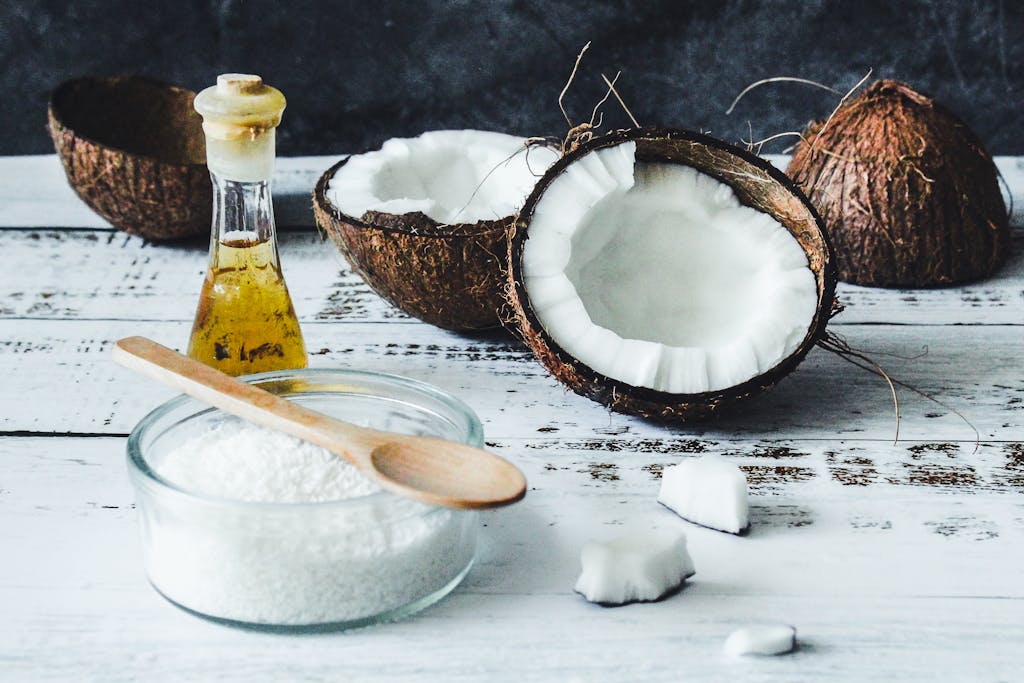
Pros:
- Natural and Gentle: No chemicals involved.
- Oral Health Benefits: Can reduce overall bacteria in the mouth.
Cons:
- Time-Consuming: Takes a while to see results.
- Texture and Feel: Some people find it unappealing.
Hydrogen Peroxide
Hydrogen peroxide is another method commonly used in teeth whitening. It’s found in many commercial whitening products.
Pros:
- Effective Whitener: Can visibly lighten teeth.
- Widely Available: Easy to find in stores.
Cons:
- Sensitivity: Can cause tooth sensitivity for some users.
- Taste: Often has a strong, chemical flavor.
Apple Cider Vinegar
Apple cider vinegar is popular for its many health benefits, including teeth whitening. The acidity helps to break down plaque and stains.
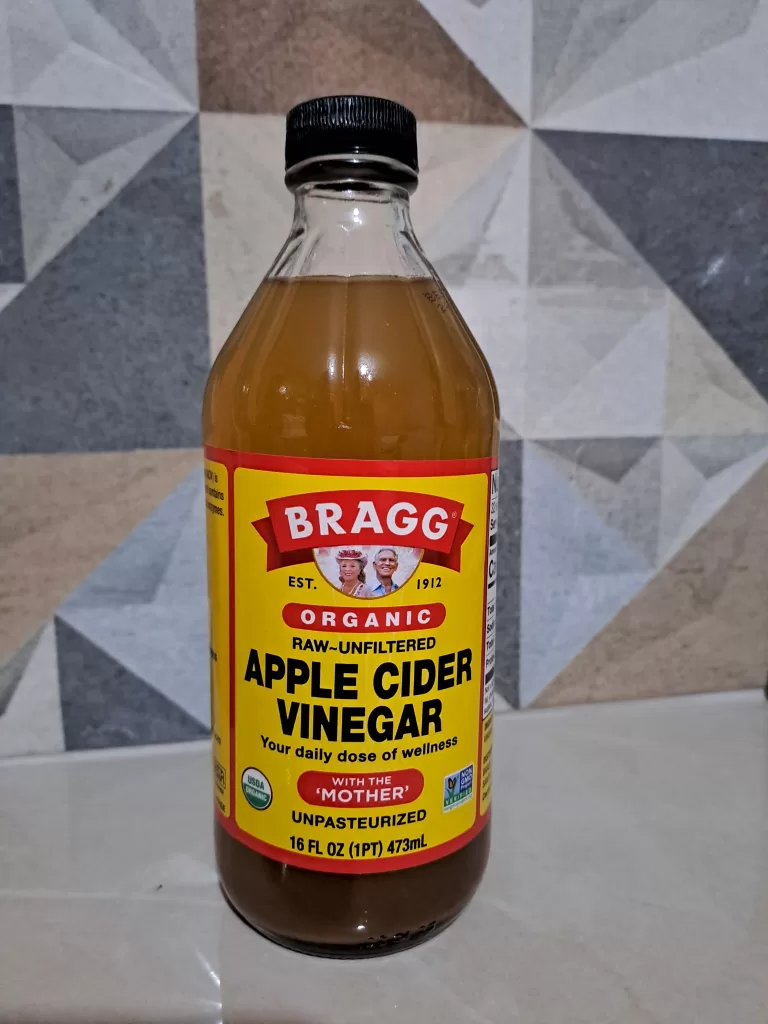
Pros:
- Natural: Uses a common kitchen ingredient.
- Multi-Purpose: Also good for cleaning and other health benefits.
Cons:
- Acidity: High acidity can erode tooth enamel with frequent use.
- Long-Term Effects: May take some time to notice changes.
Charcoal Toothpaste
Activated charcoal toothpaste has become trendy for its touted whitening effects. Charcoal is believed to absorb stains from teeth.
Pros:
- Trendy and Popular: A buzzworthy method.
- Natural: Utilizes activated charcoal.
Cons:
- Abrasiveness: Can be too rough on enamel with regular use.
- Mixed Results: Some people see benefits, while others don’t.
Want to dive deeper into the methods mentioned? Check out this article from Healthline for more detailed insights on natural teeth whitening.
Choosing the best method for natural teeth whitening depends on your needs and preferences. Remember, results can vary based on your unique teeth and oral health. Have you tried any of these methods? Share your thoughts and experiences in the comments below!
Stay tuned for more tips and tricks on getting that radiant smile! And don’t forget to subscribe for more health and wellness blogs.
Tips for Maintaining Whiter Teeth
Achieving a whiter smile isn’t just about trying natural teeth whitening methods. It’s also about maintaining those pearly whites every day. Let’s dive into some practical tips to keep your teeth bright and beautiful.
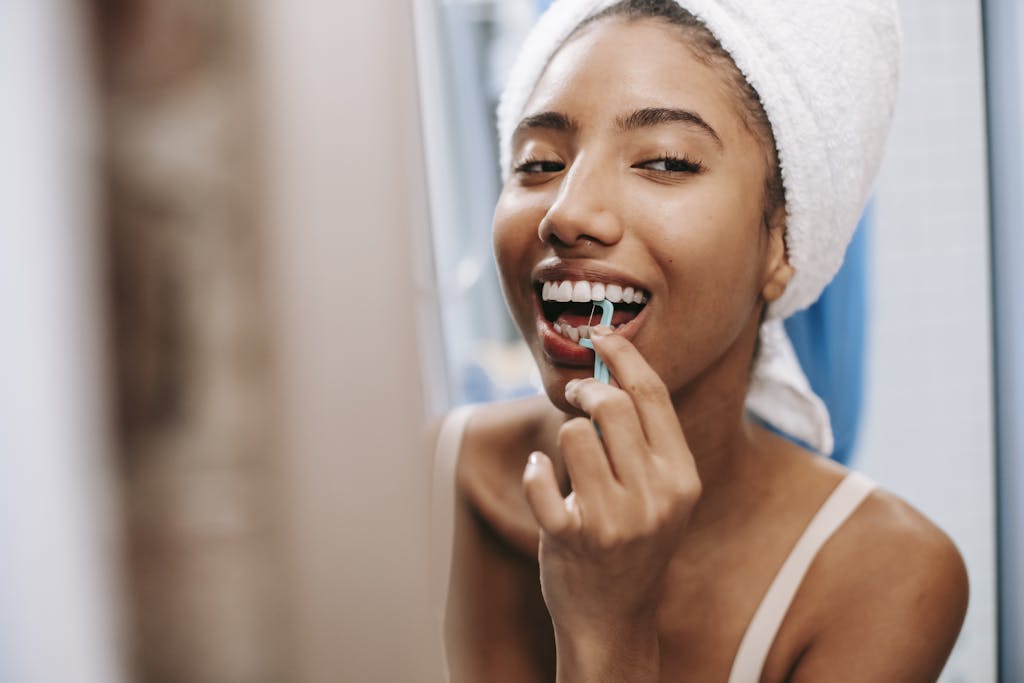
Dietary Considerations
Your diet plays a huge role in keeping your teeth white. Some foods can help maintain that sparkling smile, while others can undo all your whitening efforts.
Foods to Help Maintain Teeth Whiteness
Here are some foods that not only taste great but also help in keeping your teeth white:
- Strawberries: High in malic acid, which acts as a natural enamel whitener.
- Apples, Celery, and Carrots: These crunchy fruits and veggies work like natural toothbrushes, scrubbing away stains.
- Pineapple: Contains bromelain, an enzyme that helps in removing plaque.
- Cheese and Yogurt: Rich in lactic acid and calcium, they strengthen tooth enamel and help in whitening.
- Nuts and Seeds: Their abrasive nature helps remove surface stains from teeth.
Learn more about foods that can help maintain your teeth’s whiteness.
Foods to Avoid
While some foods help, others can stain your teeth. Here’s what you should try to avoid:
- Coffee & Tea: Their dark color can stain teeth over time.
- Red Wine: Another culprit that’s rich in tannins, leading to discoloration.
- Sugary Drinks and Candies: They promote plaque build-up, which can cause yellowing.
- Tomato Sauce and Berries: These can stain your enamel due to their deep colors.
- Soda: Acidic and sugary, it’s a double whammy for your teeth’s color and health.
Consider using a straw when drinking acidic and staining beverages.
Oral Hygiene Routine
What’s the secret to maintaining a natural teeth whitening effect? A solid oral hygiene routine! Let’s break it down:
Daily Routine
To preserve your white smile, follow this effective oral hygiene routine:
- Brush Twice a Day: Use a whitening toothpaste and brush for at least two minutes. Make sure to reach all areas of your mouth.
- Floss Daily: Flossing removes plaque and food particles that your toothbrush can’t reach.
- Rinse with Mouthwash: Use an anti-tartar mouthwash to prevent tartar build-up, which can lead to stains.
- Limit Snacks: Reduce the number of snacks, especially sugary and acidic foods. This will help in reducing plaque formation.
- Regular Dental Check-ups: Visit your dentist for a professional cleaning twice a year.
Check out how to maintain white teeth with the right oral hygiene routine.
By sticking to these simple yet effective tips, you can maintain your sparkling smile and feel confident every day. And remember, keeping your teeth white is not a one-time effort but a continuous process. Happy smiling!
Want more tips on maintaining a beautiful smile? Subscribe to our newsletter!
Expert Opinion
Dr. Sarah Thompson, DDS, a holistic dentist with over 15 years of experience, offers her insight on natural teeth whitening methods:
While professional treatments remain the most efficient for significant whitening, I’ve seen promising results from patients using natural methods. Oil pulling, in particular, can contribute to overall oral health while gently lifting stains. However, it’s crucial to remember that natural doesn’t always mean completely safe. For instance, overuse of abrasive substances like baking soda or activated charcoal can potentially wear down enamel over time.
Dr. Sarah Thompson, DDS
I generally recommend a balanced approach. Incorporate gentle natural methods into your daily routine, but don’t expect overnight miracles. Also, never substitute these methods for regular brushing, flossing, and professional check-ups. If you’re considering natural whitening, discuss it with your dentist first, especially if you have sensitive teeth or existing dental work.
Lastly, remember that the best whitening method is prevention. A diet low in staining foods and drinks, along with excellent oral hygiene, will keep your smile naturally bright.

Cultural Perspectives on Natural Teeth Whitening
- India
- Turmeric and Salt: Many Indians use a mix of turmeric and salt. This combination helps remove stains and can improve gum health.
- Neem Twigs: Known for their antibacterial properties, neem twigs are used as natural toothbrushes. They help clean teeth and freshen breath.
- Recommended Product: Organic Turmeric Powder
- Japan
- Charcoal Powder: Japanese people often use charcoal powder to clean their teeth. It absorbs impurities and whitens teeth naturally.
- Strawberries: Strawberries contain malic acid, which helps whiten teeth. Many in Japan rub strawberries on their teeth or use strawberry paste.
- Recommended Product: Activated Charcoal Powder
- United States
- Baking Soda and Hydrogen Peroxide: A popular combination in the US. It creates a mild abrasive that whitens teeth without damaging enamel.
- Oil Pulling: This involves swishing coconut oil in the mouth. It helps remove toxins and brightens teeth.
- Recommended Product: Baking Soda Toothpaste
- China
- Green Tea: Known for its antioxidants, green tea helps reduce plaque and keeps teeth white. Many Chinese drink green tea daily for dental health.
- Salt Rinses: Saltwater rinses are common, helping to clean teeth and gums.
- Recommended Product: Organic Green Tea
- Europe
- Basil Leaves: In various parts of Europe, people use basil leaves for teeth cleaning. They help remove stains and freshen breath.
- Apple Cider Vinegar: This is used as a mouth rinse to break down plaque and whiten teeth naturally.
- Recommended Product: Apple Cider Vinegar
- Africa
- Miswak Sticks: Widely used across the continent, miswak sticks have natural antibacterial properties. They help clean and whiten teeth efficiently.
- Bitter Kola Nuts: Chewing these nuts is believed to help in teeth whitening and overall oral health.
- Recommended Product: Miswak Sticks
- Middle East
- Baking Soda: Commonly used for its whitening properties. It’s applied directly to the teeth or mixed with water.
- Licorice Root: Used to combat plaque and maintain white teeth, often chewed or used as a toothbrush.
- Recommended Product: Licorice Root Chews
Natural, Eco-Friendly Oral Care Products
Here are some natural, eco-friendly options for your oral care routine. These products are great alternatives to traditional items and help in reducing environmental impact.
- Bamboo Toothbrushes
- Example: WooBamboo! Eco Toothbrush
- Key Feature: Handles made from sustainable bamboo, biodegradable.
- Natural Toothpaste
- Example: Tom’s of Maine Natural Toothpaste
- Key Feature: Free from artificial flavors, colors, and preservatives. Uses natural ingredients.
- Toothpaste Tablets
- Example: Bite Toothpaste Bits
- Key Feature: Eco-friendly packaging, plastic-free, easy to use. Great for travel.
- Mouthwash Tablets
- Example: Georganics Mouthwash Tablets
- Key Feature: Compact, plastic-free packaging. Mix with water before use.
- Floss Alternatives
- Example: Radius Silk Floss
- Key Feature: Made from natural silk, coated with natural candelilla wax. Compostable.
- Oil Pulling
- Example: Coconut Oil Pulling by Banyan Botanicals
- Key Feature: Uses organic coconut oil. Promotes oral health naturally.
- Charcoal Toothpaste
- Example: Hello Activated Charcoal Toothpaste
- Key Feature: Detoxifies and whitens using natural charcoal. Coconut oil base.
- Copper Tongue Scrapers
- Example: Dr. Tung’s Tongue Cleaner
- Key Feature: Made with pure copper. Helps reduce bad breath.
- Recycled Plastic Floss Pick
- Example: The Humble Co. Floss Picks
- Key Feature: Handles made from corn starch-based bioplastics.
- Natural Whitening Strips
- Example: Crest 3D White Strips (Natural)
- Key Feature: Uses hydrogen peroxide derived from natural sources. No artificial additives.
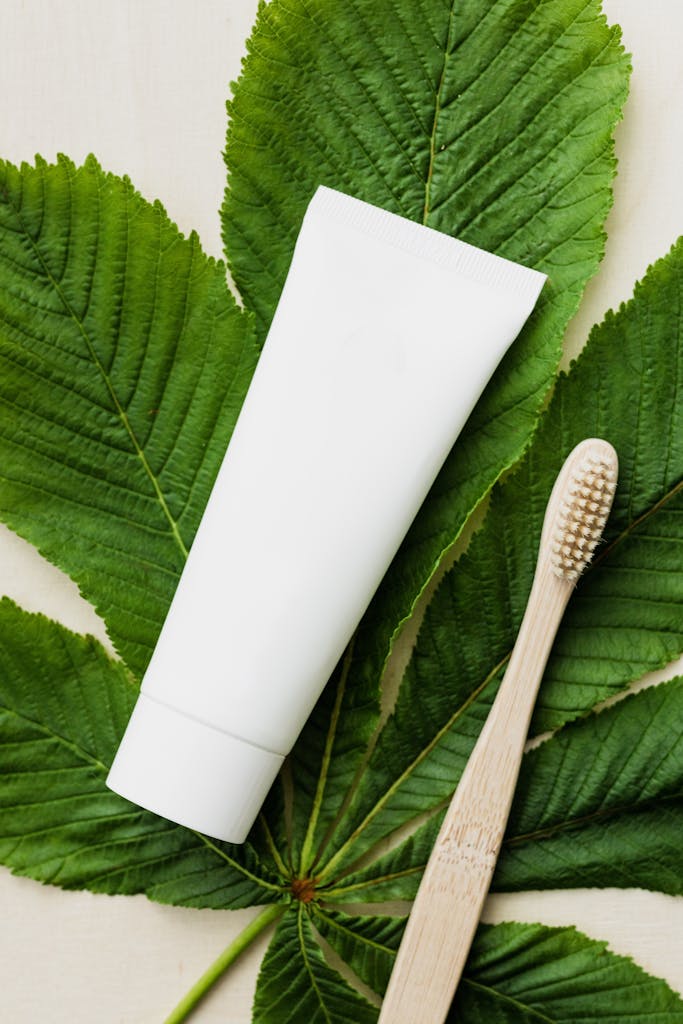
Using these eco-friendly products not only benefits your health but also supports sustainable practices.
Conclusion
Natural teeth whitening offers a safe, cost-effective way to achieve a brighter smile. Using everyday items like baking soda, hydrogen peroxide, and coconut oil, you can tackle stains without harsh chemicals. It’s simple, inexpensive, and can be done from the comfort of your home.
Always remember to protect your enamel by not overdoing it. A brighter smile is possible with consistent care and the right methods.
Why wait? Try these natural methods and see the difference. Subscribe for more tips and share your results!

FAQ: Natural Teeth Whitening
Q1: How long does it take to see results with natural whitening methods?
A: Results vary depending on the method and consistency of use. Generally, you might start noticing a difference in 2-4 weeks with regular application. Remember, natural methods tend to work more gradually than commercial products.
Q2: Are these methods safe for sensitive teeth?
A: Natural methods are often gentler than commercial products, but they can still cause sensitivity. Start slowly and discontinue use if you experience discomfort. Oil pulling and strawberry scrubs are usually the gentlest options.
Q3: Can natural whitening damage my enamel?
A: When used correctly, these methods shouldn’t damage enamel. However, overuse of acidic ingredients (like apple cider vinegar) or abrasive substances (like baking soda) could potentially wear down enamel. Always follow recommended usage guidelines.
Q4: Will these methods work on dental work like crowns or veneers?
A: Natural whitening methods typically only work on natural tooth enamel. They won’t change the color of crowns, veneers, or fillings. Consult your dentist if you’re concerned about color matching.
Q5: How often should I use these whitening methods?
A: It depends on the method. Oil pulling can be done daily, while more abrasive methods like baking soda paste should be limited to 1-2 times per week. Always follow the specific recommendations for each method.
Q6: Can I combine different natural whitening methods?
A: Yes, you can combine methods, but be careful not to overdo it. For example, you might do oil pulling daily and use a baking soda paste once a week. Listen to your teeth and gums – if you experience sensitivity, reduce frequency or stop.
Q7: Are these methods suitable for children?
A: Most of these methods are not recommended for children. Their teeth are still developing and more sensitive. Always consult a pediatric dentist before trying any whitening method on a child’s teeth.
Q8: Can natural methods remove deep stains?
A: Natural methods work best on surface stains. For deeper, more stubborn stains, you might need professional cleaning or whitening treatments. Consult your dentist for severe discoloration.
Remember, while these natural methods can be effective, it’s always best to consult with your dentist before starting any new oral care routine, especially if you have existing dental issues or concerns.


